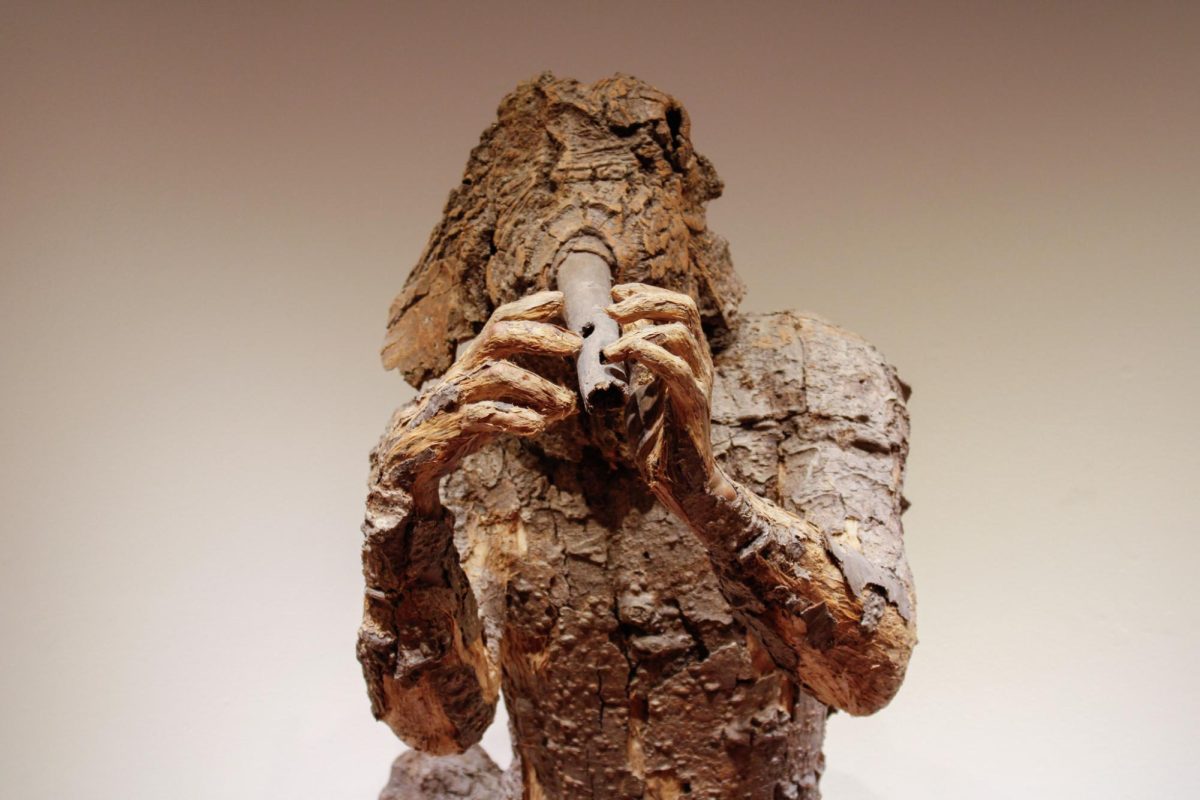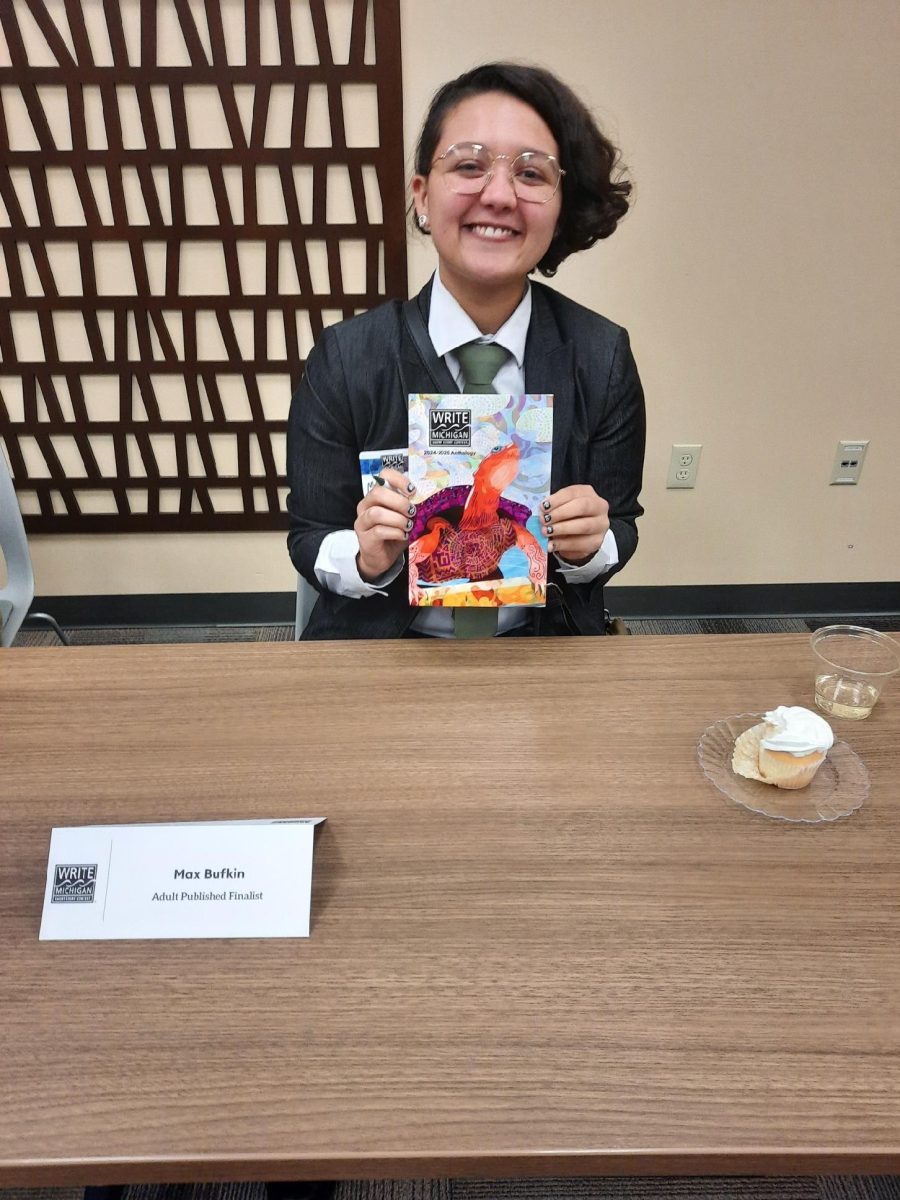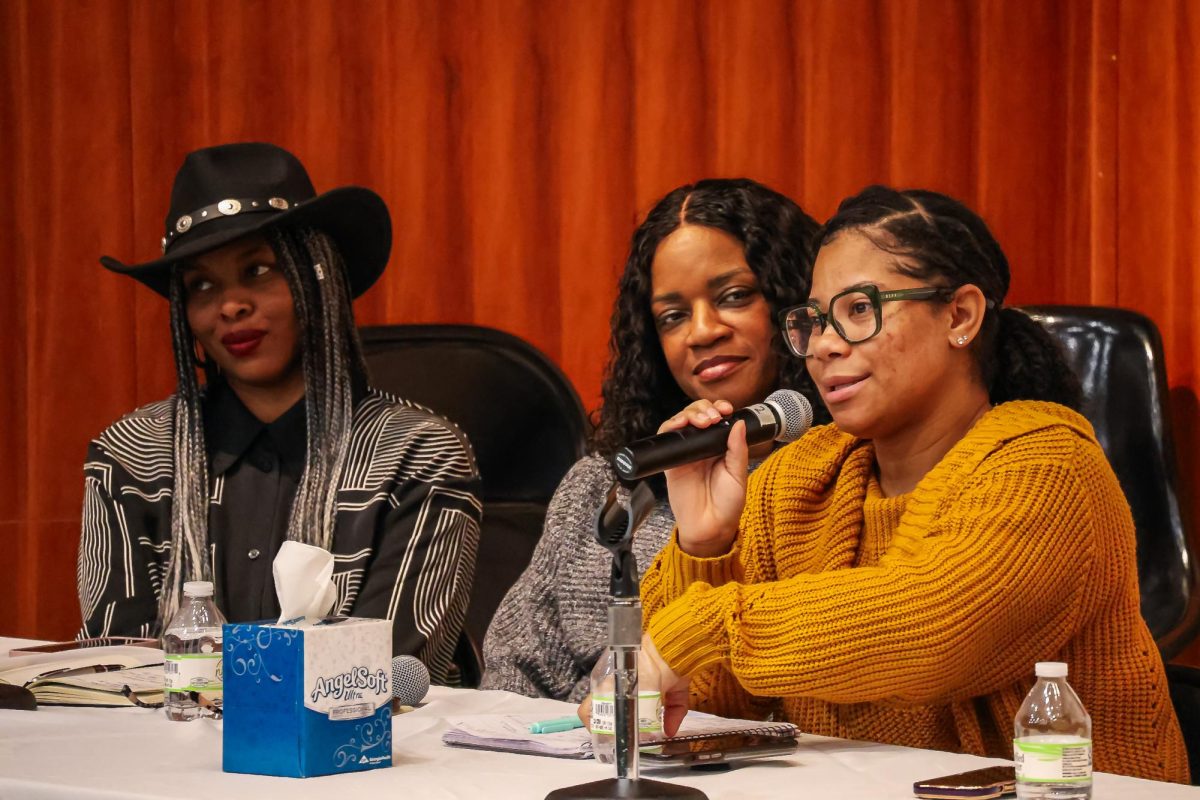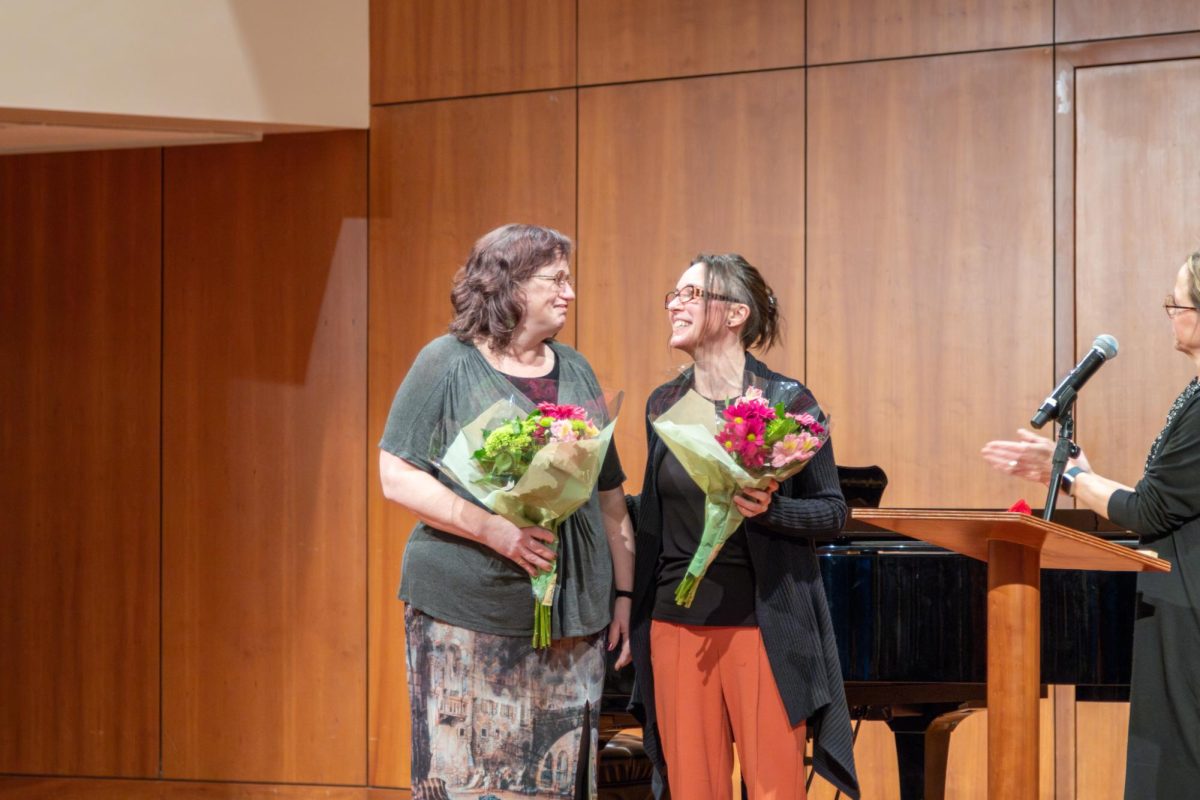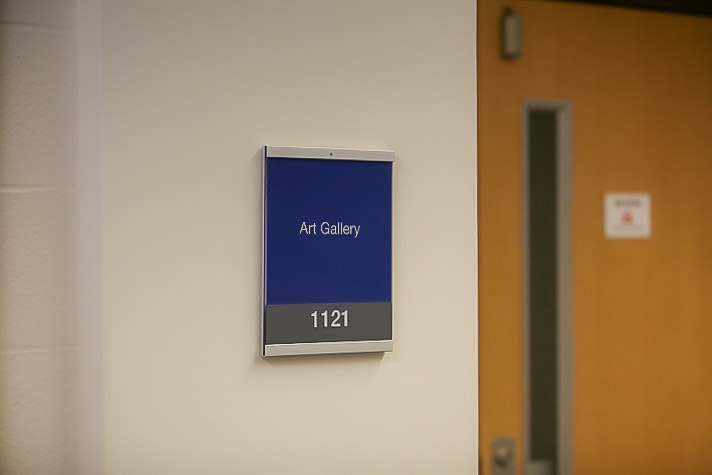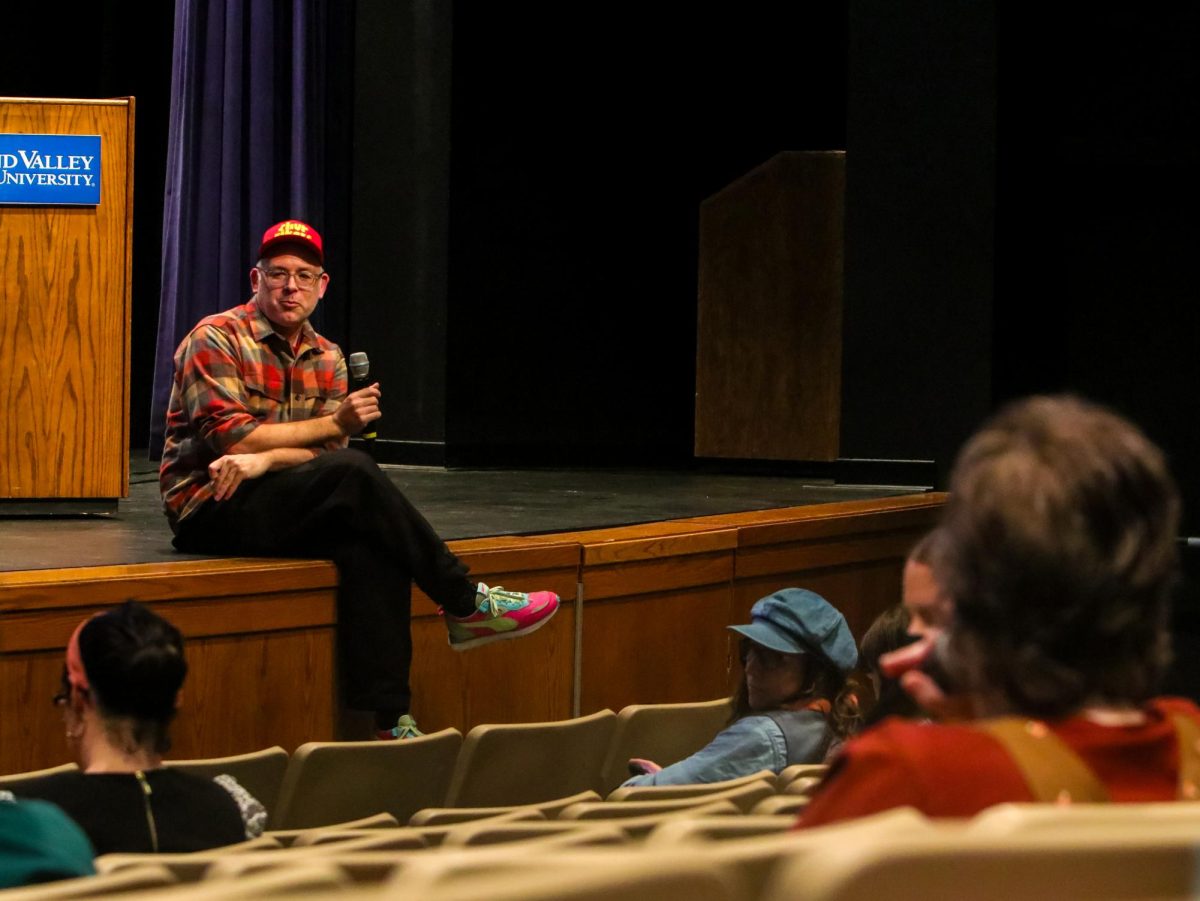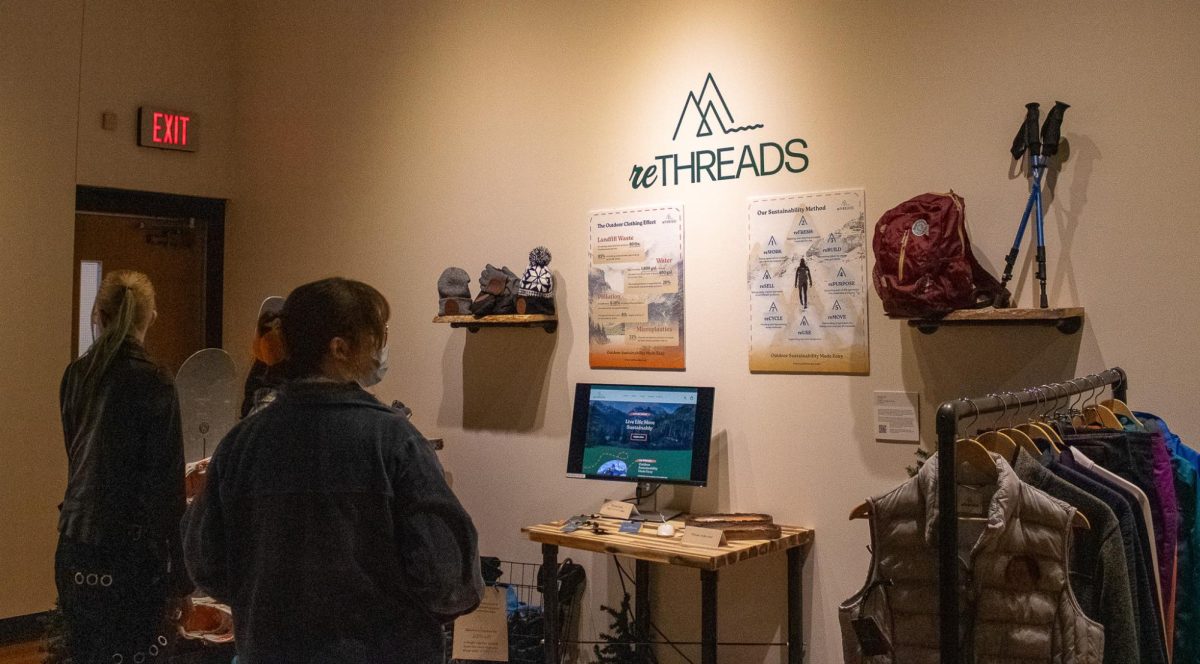On Tuesday, Nov. 19, the Grand Valley State University Special Collections & University Archives hosted a woodcut craft workshop for students to explore the age-old techniques of woodcut and block printing.
The event, which was organized by GVSU student Zachary Glovier, provided attendees with hands-on experience of the archaic art form. Participants carved their own stamps out of wood blocks, which they then used to print designs onto paper.
Woodcutting is part of the old-fashioned art form of printmaking, where an image or design is carved onto a wooden block, typically made of softwood, and then used to create prints by pressing the design onto paper. It is one of the oldest forms of relief printmaking, and was once used as the primary medium for book illustrations.
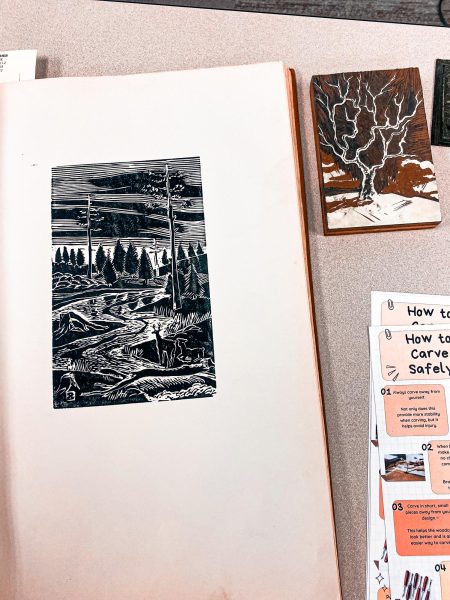
“It (got) people together in a low-pressure environment to do something hands-on and creative,” said Leigh Rupinski, the archivist for public services and community engagement. “That’s just a really nice feeling. The idea (was) to give (students) a break and a little bit of time to do something crafty that (they) might not get to do otherwise.”
The woodcut and block printing event proved to do just that. As the participating students came and went, some put their headphones in and carved solo, while others sat in groups and talked noisily while carving.
Glovier, a studio art and art history major at GVSU, organized the event with the hope of encouraging students to learn about the art form and relax in a stress-free environment. Glovier noted that in prior courses they’ve taken, students have grown to appreciate the technique of block printing. By organizing the event, Glovier wanted to share the art form with others who might have been curious.
“I think it is important to keep woodcut and relief printing as a continued art form because it has such a rich history,” Glovier said. “It is important to keep these tactile ways of reproducing and creating imagery alive since we (have done) it for a long time.”
Rupinski said the University Archive’s workshops evolve from the passions and skills that students have and are eager to share.
“The goal (of this event was) learning about history, and how illustrations and books have evolved over time,” Rupinski said. “Our space is a community space where (students) can come and learn something that is interesting.”
Rupinski added that keeping an art form like printmaking alive can demonstrate how art has evolved. Even if the medium isn’t commonly used anymore, students can find beauty in seeing how illustrations were made, and appreciate how far art has come. By practicing this art form, Rupinski hoped that students could see why some artists still prefer to use woodcut as their medium of choice.






